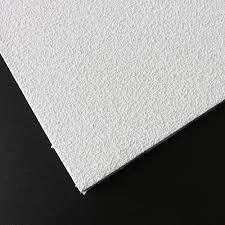- Afrikaans
- Albanian
- Amharic
- Arabic
- Armenian
- Azerbaijani
- Basque
- Belarusian
- Bengali
- Bosnian
- Bulgarian
- Catalan
- Cebuano
- Corsican
- Croatian
- Czech
- Danish
- Dutch
- English
- Esperanto
- Estonian
- French
- German
- Greek
- Hindi
- Indonesian
- irish
- Italian
- Japanese
- Korean
- Lao
- Malay
- Myanmar
- Norwegian
- Norwegian
- Polish
- Portuguese
- Romanian
- Russian
- Serbian
- Spanish
- Swedish
- Thai
- Turkish
- Ukrainian
- Uzbek
- Vietnamese
авг. . 07, 2024 05:00 Back to list
Installing and Choosing the Right Gypsum Ceiling Access Panels for Your Home Renovation
The Essential Guide to Gypsum Ceiling Access Panels
Gypsum ceiling access panels are an essential component of modern construction, particularly for spaces requiring maintenance and easy access to ceiling-mounted utilities such as plumbing, electrical wiring, and HVAC systems. These panels provide a seamless and aesthetically pleasing solution for both residential and commercial buildings, blending functionality with design. In this article, we will explore what gypsum ceiling access panels are, their advantages, installation procedures, and common applications.
Understanding Gypsum Ceiling Access Panels
Gypsum ceiling access panels are specially designed openings in gypsum board ceilings that allow technicians and homeowners to access the above-ceiling areas without damaging the structural integrity of the ceiling. Typically made from gypsum board or other similar materials, these panels are lightweight yet durable, and they come in various sizes to suit different applications. Upon installation, they can be painted or finished to match the surrounding ceiling, making them virtually invisible and maintaining the aesthetic appeal of the room.
Advantages of Gypsum Ceiling Access Panels
1. Easy Accessibility One of the primary benefits of gypsum ceiling access panels is their ability to provide quick access to utilities and maintenance areas. This accessibility is crucial for regular inspections and repairs, reducing downtime and inconvenience.
2. Cost-Effectiveness By facilitating easier access to ceiling spaces, these panels can help reduce labor costs associated with maintenance and repairs. Technicians can quickly access the necessary area without the need for extensive demolition or reconstruction.
3. Aesthetic Integration Gypsum panels can be finished and painted to match the surrounding ceiling, allowing them to blend seamlessly into the environment. This feature is particularly important in spaces where design is crucial, such as in commercial offices or high-end residences.
4. Fire Resistance Many gypsum panels are designed to be fire-resistant, making them a safer option for buildings, particularly in areas that may be prone to fire hazards. This quality can enhance the overall safety of your property.
5. Sound Insulation Gypsum access panels also provide sound attenuation properties, which helps in reducing noise transmission between spaces—an important aspect in multi-use buildings or residential properties.
Installation Process
gypsum ceiling access panel

The installation of gypsum ceiling access panels typically involves several steps
1. Location Selection Identify the optimal location for the panel to ensure it allows access to the necessary utilities while maintaining visual appeal.
2. Cutting the Opening Using a drywall saw, a rectangular opening is cut into the gypsum ceiling based on the panel size.
3. Mounting the Frame If required, a mounting frame is installed to support the access panel, ensuring it is level and secure.
4. Inserting the Panel The access panel is inserted into the opening. It should fit snugly to minimize any gaps.
5. Finishing Touches Finally, the panel can be painted or finished to match the ceiling's color and texture, allowing it to disappear into the surrounding space.
Common Applications
Gypsum ceiling access panels can be found in various settings, including
- Commercial Buildings Offices, schools, and retail spaces rely on access panels for efficient maintenance of electrical and HVAC systems. - Residential Homes Homeowners often use these panels in areas like kitchens and bathrooms where plumbing or electrical access is crucial. - Healthcare Facilities Hospitals and clinics utilize access panels to maintain strict standards for hygiene and accessibility in critical areas.
In conclusion, gypsum ceiling access panels are invaluable tools in modern construction and maintenance, providing a blend of practicality, safety, and aesthetic appeal. With their ease of installation and myriad advantages, they are a wise investment for any property owner looking to enhance their building’s functionality without compromising its design.
-
Transform Interiors with PVC Gypsum Ceiling: A Stylish, Durable, and Moisture-Resistant SolutionNewsMay.19,2025
-
The Smart Interior Upgrade: Discover the Durability and Versatility of Gypsum Ceiling Access Panel SolutionsNewsMay.19,2025
-
The Smart Choice for Interior Design: Discover the Value of PVC Gypsum Ceiling SolutionsNewsMay.19,2025
-
Mineral Fiber Ceiling Tiles: The Smart Blend of Performance and AestheticsNewsMay.19,2025
-
Mineral Fiber Ceiling Tiles: The Superior Choice Over Gypsum for Sound and Fire SafetyNewsMay.19,2025
-
Mineral Fiber Ceiling Tiles: Eco-Friendly Strength and Style for Every CeilingNewsMay.19,2025







